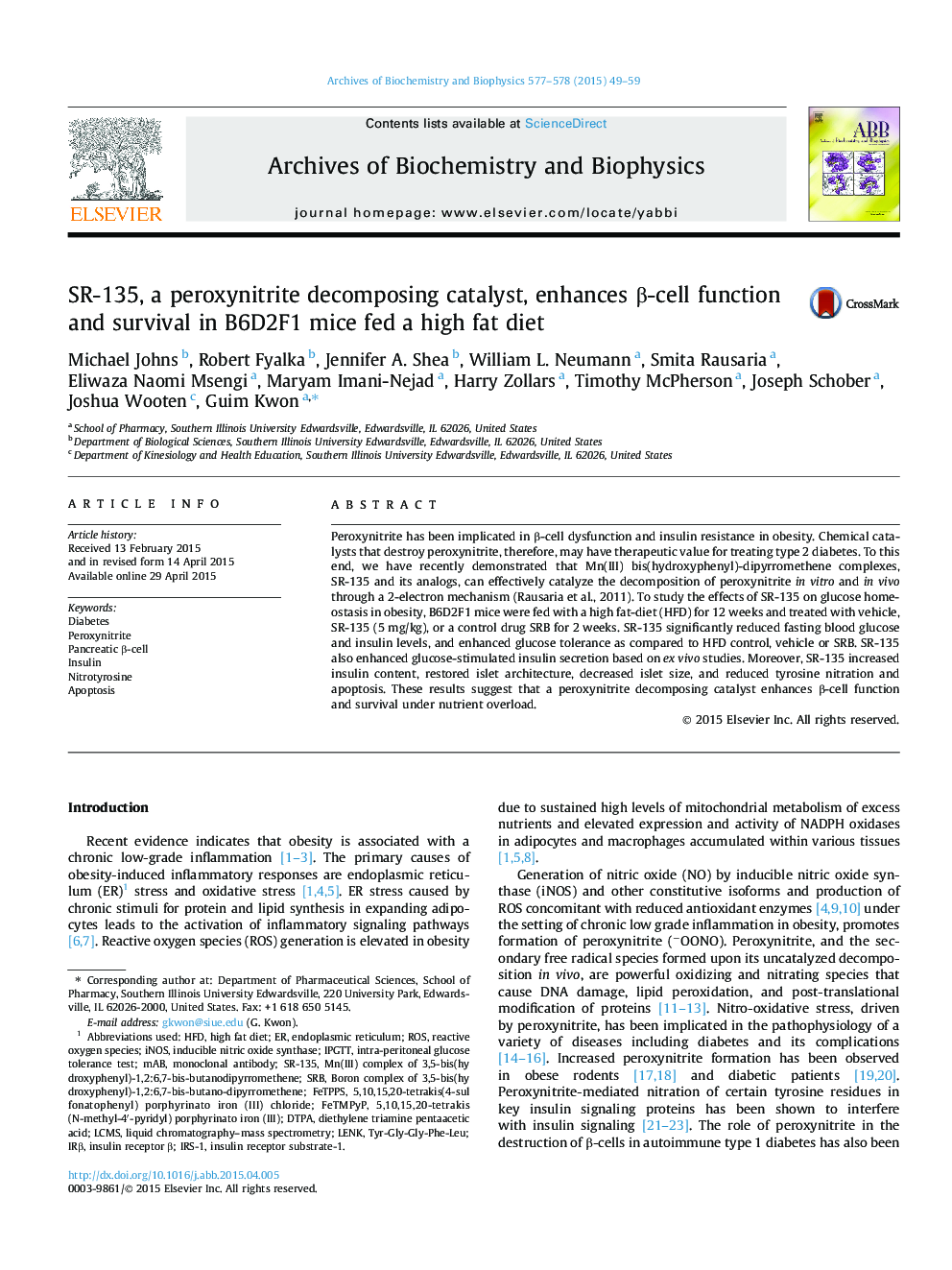| Article ID | Journal | Published Year | Pages | File Type |
|---|---|---|---|---|
| 1924920 | Archives of Biochemistry and Biophysics | 2015 | 11 Pages |
Abstract
Peroxynitrite has been implicated in β-cell dysfunction and insulin resistance in obesity. Chemical catalysts that destroy peroxynitrite, therefore, may have therapeutic value for treating type 2 diabetes. To this end, we have recently demonstrated that Mn(III) bis(hydroxyphenyl)-dipyrromethene complexes, SR-135 and its analogs, can effectively catalyze the decomposition of peroxynitrite in vitro and in vivo through a 2-electron mechanism (Rausaria et al., 2011). To study the effects of SR-135 on glucose homeostasis in obesity, B6D2F1 mice were fed with a high fat-diet (HFD) for 12 weeks and treated with vehicle, SR-135 (5 mg/kg), or a control drug SRB for 2 weeks. SR-135 significantly reduced fasting blood glucose and insulin levels, and enhanced glucose tolerance as compared to HFD control, vehicle or SRB. SR-135 also enhanced glucose-stimulated insulin secretion based on ex vivo studies. Moreover, SR-135 increased insulin content, restored islet architecture, decreased islet size, and reduced tyrosine nitration and apoptosis. These results suggest that a peroxynitrite decomposing catalyst enhances β-cell function and survival under nutrient overload.
Related Topics
Life Sciences
Biochemistry, Genetics and Molecular Biology
Biochemistry
Authors
Michael Johns, Robert Fyalka, Jennifer A. Shea, William L. Neumann, Smita Rausaria, Eliwaza Naomi Msengi, Maryam Imani-Nejad, Harry Zollars, Timothy McPherson, Joseph Schober, Joshua Wooten, Guim Kwon,
